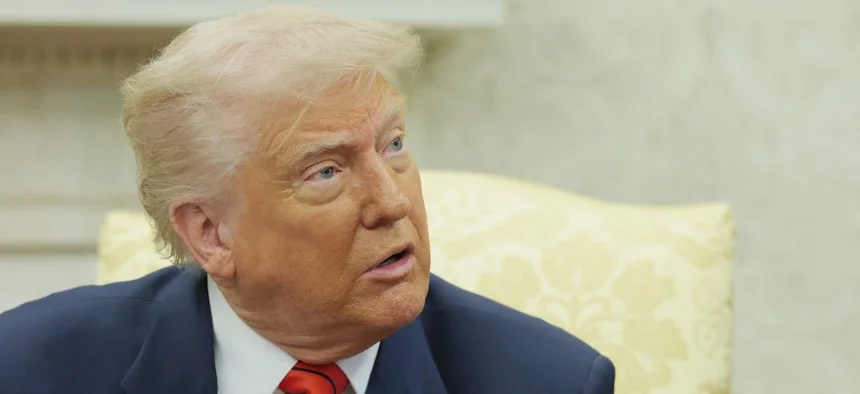
Can a Judge Permanently Derail Trump’s Government Purge?
In a stunning legal twist, a federal judge has stepped in to temporarily block President Trump's aggressive efforts to slash the federal workforce, igniting a fierce debate over executive authority and congressional oversight. This decision comes amid growing concerns that such drastic changes could disrupt essential services, from disaster aid to public health, affecting millions of Americans.
The ruling was issued by U.S. District Judge Susan Illston in San Francisco, who deemed Trump's February executive order and related directives from his Department of Government Efficiency (DOGE) as potentially unlawful. Led by billionaire Elon Musk, DOGE has been orchestrating plans to fire tens of thousands of federal employees and reorganize agencies without seeking approval from Congress. As outlined in court documents, agencies like Health and Human Services and Veterans Affairs were already executing mass layoffs, with one example highlighting a Pittsburgh office facing the loss of 221 out of 222 workers dedicated to mine safety research.

Illston's temporary restraining order, effective for 14 days, pauses further reductions in force (RIFs) across more than a dozen agencies, including Agriculture, Energy, State, and the Environmental Protection Agency. In her opinion, the judge emphasized that while presidents have the right to propose changes, they must collaborate with Congress to enact them, citing constitutional principles. "He must do so with the cooperation of Congress; the Constitution is structured that way," Illston stated during the hearing. This echoes arguments from plaintiffs, including labor unions like the American Federation of Government Employees and cities such as San Francisco, who claim these moves violate separation of powers.
Comparisons to Trump's first term highlight the contrast: back then, he sought legislative buy-in for similar reforms, but now, critics argue, DOGE's secretive approach—refusing to disclose plans—has overstepped bounds. Government lawyers countered that the executive order merely offers "guidance," yet evidence shows agencies are rushing implementations without proper review. For instance, a Vermont farmer missed disaster aid due to delayed inspections, and Social Security wait times have surged, illustrating real-world impacts.
This case is part of a broader wave of legal challenges against Trump's administration, with parallels to another San Francisco suit where mass firings of probationary workers were contested. The involvement of high-profile figures like Musk, a major Trump donor, adds intrigue, as his role in DOGE raises questions about influence and accountability in government efficiency drives.

As the order could lead to appeals at the Supreme Court, it underscores the tension between efficiency and democratic processes. This judicial intervention not only halts immediate cuts but also prompts a deeper examination of how far a president can go in reshaping bureaucracy.
In summary, Judge Illston's decision serves as a critical reminder of the checks and balances that safeguard American governance. It raises essential questions: Will this temporary halt evolve into a permanent block, or will Trump's vision prevail? We invite you to share your thoughts in the comments—do you support streamlining government, or is congressional involvement key to protecting public services?